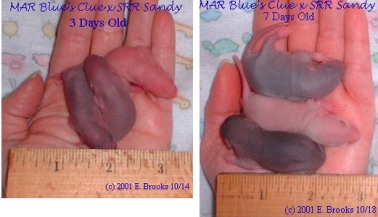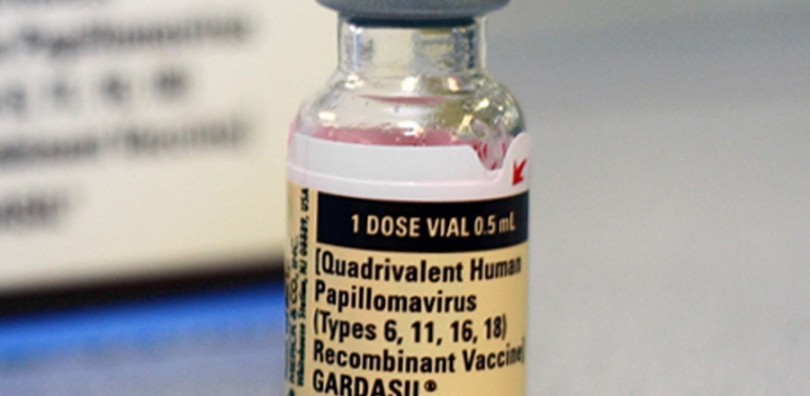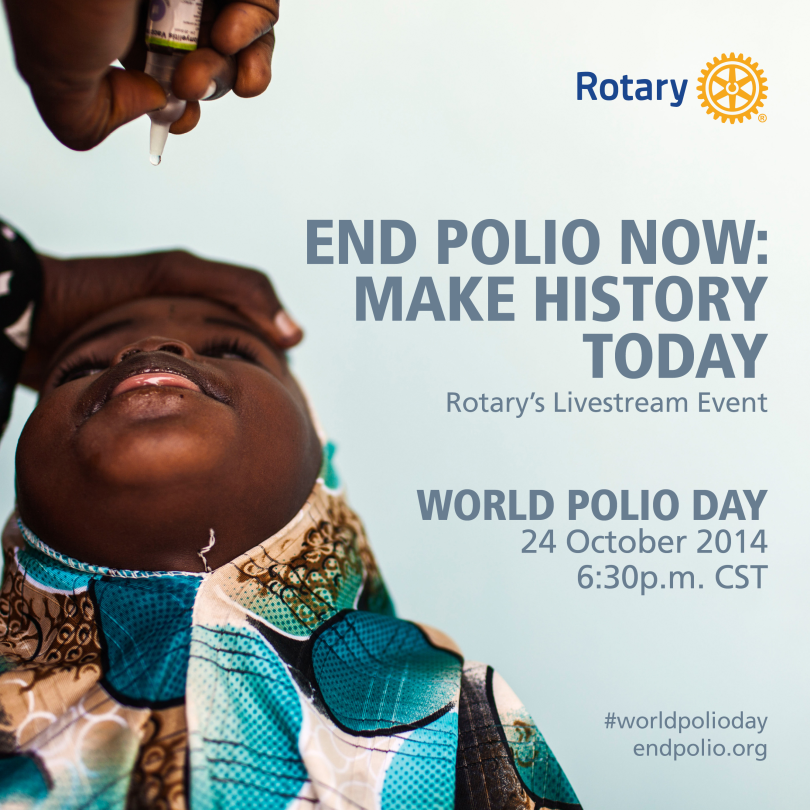Recycling is good for the environment and, apparently, in rekindling the motivated reasoning that fuels HPV vaccine fears. If you’re new to Rational Catholic Blog, please consider starting at “The Rabbit Hole to HPV” since my goal is to avoid repeating too many of the same points. Suffice it to say, I have heard the arguments against vaccination (initially being swayed by some of them myself), and they cannot be supported. Almost no “new” arguments exist; they are, by and large, simply rehashes of the same (misrepresented/misrepresentative) studies or the same ideologically-motivated reasoning.
The “new” statement by the American College of Pediatricians (ACP) is no exception.
Now, some writers have been focusing on ACP itself, the accusation being that they put ideology over sound science. The ACP is not to be confused with the American Academy of Pediatrics (AAP), the major professional organization of pediatricians. While there is something to be said of the trustworthiness of a source, I would like to focus on the statement. After all, having ideological principles doesn’t disqualify you from making valid arguments and use of science… though, as I will explain, ACP does neither.
Alarm? A bell pull at most
Despite the headlines circulating around the anti-vaccination world (“American College of Pediatricians Sounds Alarm…”, “Pediatricians Association Admits HPV Vaccine causes Ovarian Failure”, etc.), the actual statement by the ACP, while still highly problematic, was actually very modest in nature. Their concluding remarks admit “there is no strong evidence of a causal relationship between HPV4 and ovarian dysfunction”, and they have not found their concerns to be so compelling as to withdraw their current guideline on HPV vaccination, which states, “Given the effectiveness of these vaccines against HPV infection and its morbidities, the American College of Pediatricians favors offering HPV vaccination to all children and young adults even if they are committed to abstinence until marriage.”
Scathing, no?
Now, this is not to say that ideology might not be playing a significant role in their “concerns” because from an objective standpoint, their statement is schizophrenic and scientifically unjustifiable.
Manipulating History by Removing Context
As this blog has pointed out in the past, VAERS reports cannot and do not prove anything about vaccine safety. They do not even rise to the level of a published case report as they are often submitted by laymen or lawyers. Still, they can be useful in raising flags for potential rare adverse reactions. The ACP states:
[S]ince licensure of Gardasil® in 2006, there have been about 213 VAERS reports (per the publicly available CDC WONDER VAERS database) involving amenorrhea, POF or premature menopause, 88% of which have been associated with Gardasil®… This compares to the pre-HPV vaccine period from 1990 to 2006 during which no cases of POF or premature menopause and 32 cases of amenorrhea were reported to VAERS.
Many adolescent females are vaccinated with influenza, meningococcal, and tetanus vaccines without getting Gardasil®, and yet only 5.6% of reports related to ovarian dysfunction since 2006 are associated with such vaccines in the absence of simultaneous Gardasil® administration. The overwhelming majority (76%) of VAERS reports since 2006 with ovarian failure, premature menopause, and/or amenorrhea are associated solely with Gardasil®. When VAERS reports since 2006 are restricted to cases in which amenorrhea occurred for at least 4 months and is not associated with other known causes like polycystic ovary syndrome or pregnancy, 86/89 cases are associated with Gardasil®, 3/89 with CervarixTM, and 0/89 with other vaccines administered independently of an HPV vaccine. Using the same criteria, there are only 7 reports of amenorrhea from 1990 through 2005 and no more than 2 of those associated with any one vaccine type.
My reaction: “Well, duh.” Let’s unpack this statement to explore how unremarkable it is.
We know that primary ovarian insufficiency/premature ovarian failure, premature menopause and amenorrhea (cessation of menses) occur even in the absence of vaccination. It’s a bit more complicated, but essentially, you would be looking for something that indicated that the rate of POF/amenorrhea was greater than the background incidence if you were trying to implicate a vaccine as the cause.
Here’s the problem: OF COURSE there would be more cases of POF et. al. reported after 2006 by coincidence alone! You have to be an adolescent or older to be diagnosed with those conditions and, prior to 2006, there were hardly any vaccines given at that age. Of course you would have few reports correlated with vaccination because there weren’t many people getting vaccines at the ages when those diagnoses could be made. If you look at the current vaccination schedule, the vaccines that a preteen or teen get are Tdap, influenza, meningococcal, and HPV. But, this is the current schedule, not the schedule that applied prior to the introduction of Gardasil.
I entered university in 2002. At that time, I needed to get one shot because university students were part of the “at risk” population for meningococcal meningitis. I hadn’t had a shot in years. There was no Gardasil. I was like the unfortunate majority and was not getting an annual flu shot. And I was still up to date from the tetanus booster I got well prior to menarche (first menses). If I were to have developed ovarian failure in my prime teen years, there was no possible way for it to have been correlated, even loosely, with vaccines because I wasn’t getting any. But now, simply by virtue of the vaccination schedule changes, we should expect correlation of “several weeks to years” to increase independent of any causal link; there simply are substantially more menstruating adolescent girls being vaccinated. Completely unremarkable.
 Further, the presentation of the statistics is clearly prejudiced against Gardasil. 213 VAERS reports in the span of about 9 years (Gardasil was licensed in 2006 and was officially incorporated into the CDC schedule in 2007). Even if we consider how incredibly small that is compared to the 80 million doses administered during that same time— 0.00027%— it is still overinflated. The skeptical mind always tries to change the statistical representation. Does it say that 12%— more than 1 out of 10 reports— had absolutely no association with Gardasil? No. Does it say that less than half of the reports (89 total) had both amenorrhea of at least 4 months and were not associated with a known risk factor? No. But these are all simple ways of restating ACP’s own statistics.
Further, the presentation of the statistics is clearly prejudiced against Gardasil. 213 VAERS reports in the span of about 9 years (Gardasil was licensed in 2006 and was officially incorporated into the CDC schedule in 2007). Even if we consider how incredibly small that is compared to the 80 million doses administered during that same time— 0.00027%— it is still overinflated. The skeptical mind always tries to change the statistical representation. Does it say that 12%— more than 1 out of 10 reports— had absolutely no association with Gardasil? No. Does it say that less than half of the reports (89 total) had both amenorrhea of at least 4 months and were not associated with a known risk factor? No. But these are all simple ways of restating ACP’s own statistics.
Polysorbate 80 Flimflam
The numbers alone should give a person pause before taking these “concerns” too seriously. However, what follows regarding vaccine components should cement in the reader’s mind just how vacuous these “concerns” truly are.
ACP states:
[P]otential mechanisms of action have been postulated based on autoimmune associations with the aluminum adjuvant used1 and previously documented ovarian toxicity in rats from another component, polysorbate 80…
Few other vaccines besides Gardasil® that are administered in adolescence contain polysorbate 80.
Zounds, the chemikillz! Seriously, nothing screams desperation and bias like selectively and inconsistently zeroing in on a “toxin” with no regard for dosage.
I think they allot more focus for polysorbate 80 as the “toxin” of choice because they know what a dead end it would be to focus on aluminum adjuvants. Aluminum adjuvants have been used in vaccines since the 1930s and millions of reproductive-aged women have been recipients of those vaccines, such as for their tetanus boosters, with no fertility concerns raised or realized over the decades (save by anti-vaccinationists like Lucija Tomljenovic, ophthalmologist-turned-vaccine-faux-expert).
Turning to polysorbate 80, it is a ubiquitous surfactant. It is used as an emulsifier in everything from ice cream to soaps to vaccines. Europeans and Americans consume about 100 milligrams (mg) of polysorbate 80 per day. The entire polysorbate 80 content in the 3-dose, 6-month Gardasil series is only 150 micrograms (µg) or 0.15 milligrams, less than one six-hundredth of the average daily consumption. Given this information, we would require clear and compelling evidence that such low amounts of polysorbate 80 could plausibly cause deleterious effects, but there is none presented.
“But what about the effects in the ovaries of rats?”
What about them? If anything, they demonstrate the sheer absurdity of the polysorbate 80 hypothesis. The colloquialism is “the dose makes the poison.” The evidence offered by the study cited by ACP (by the same Dr. Little whose anti-Gardasil work I have previously mentioned) of the deleterious effects of polysorbate 80 was a 1993 study entitled “Delayed effects of neonatal exposure to Tween 80 on female reproductive organs in rats”. In that study, the experimental groups of rat pups were given one 0.1mL IP injection of 1%, 5%, or 10% polysorbate 80 (aka Tween 80) on days 4, 5, 6 and 7 after birth and subsequently examined.
Consider the following:
 1) The rats had exponentially higher doses of polysorbate 80. The density of polysorbate 80 (aka Tween 80) is 1.06 g/mL. When we do the calculations, we find that the experimental groups received totals of 4240µg (1% group), 21200µg (5% group) and 42400µg of polysorbate 80. Again,the total in the whole Gardasil series is only 150µg.
1) The rats had exponentially higher doses of polysorbate 80. The density of polysorbate 80 (aka Tween 80) is 1.06 g/mL. When we do the calculations, we find that the experimental groups received totals of 4240µg (1% group), 21200µg (5% group) and 42400µg of polysorbate 80. Again,the total in the whole Gardasil series is only 150µg.

2)The rats are exponentially smaller than humans. The rats in this experiment were pups, injected on days 4-7 of life. At that age, their weight will not top 20 grams (0.02kg), less than an ounce, and likely they would be far lighter. The average weight of an 11-year-old girl is 79 lbs, or 35.8 kg. Compare: girls over the course of the Gardasil series would receive 4 µg/kg body weight of polysorbate 80. At the most conservative minimum, the rats pups received, 212,000 µg/kg body weight up to greater than 2,120,000 µg/kg. In order to get even close to the same exposure from the Gardasil series as the rat pups, your 11-year-old girl should weigh no greater than 0.7g or less than the weight of a paperclip!
3) The experimental design is completely incongruous to Gardasil vaccination. The icing on this pseudoscience cake is the fact that there are so many disparities between the experiment and vaccination scenarios beyond the mind-boggling dosage disparity. Gardasil injections are intramuscular; the rat injections were IP (into the body cavity adjacent to the reproductive organs). Gardasil injections are spaced over 6 months; the rat injections were over 4 consecutive days. Gardasil injections are given to adolescents; the rat injections were given to rapidly developing newborns.
Selective, dishonest paranoia
If one statement were to indicate the clear bias of ACP’s statement, it would be this: “Few other vaccines besides Gardasil® that are administered in adolescence contain polysorbate 80.”
That statement is so deceptive and takes a dishonest liberty with the word “few”. We already know that there are few vaccines scheduled to be given in adolescence. But of the four disease categories (Tdap, influenza, meningococcal, HPV), the majority (Tdap, influenza, HPV) have at least one formulation with polysorbate 80! Further, the early pediatric schedule is riddled with vaccine formulations containing polysorbate 80. But you know what does not have polysorbate 80? Cervarix, the other HPV vaccine.
And yet, only HPV vaccines are of “concern” to the ACP? Why? The reason cannot be found from an objective, consistent, or rational standpoint. And, really, that’s kind of the point…
Round about the roundabout…

I wrote “The Rabbit Hole to HPV” to launch this blog in 2014. I was pregnant with my 3rd living child, who is now an adorable and painfully heavy toddler. NOTHING. HAS. CHANGED. It’s the same players, the same game. Oh sure, there might be the occasional new faces or new twist, but it always boils down to something exhaustingly familiar, something other than the science.
Why did the ACP release this statement despite the painfully obvious shortcomings? I can’t answer for them. The only answer that seems reasonable to me is that, intentionally or not, they are seeking to validate those eschewing vaccination for human papillomavirus with a phony veneer of scientific credibility.
But it’s all a façade.
And I pray that someday I won’t have to point that out again.





